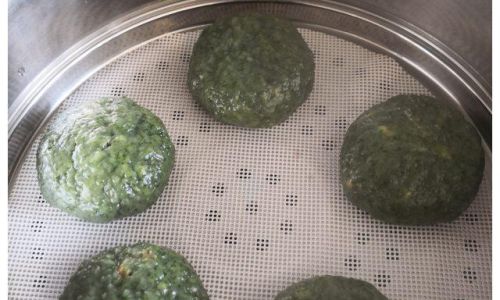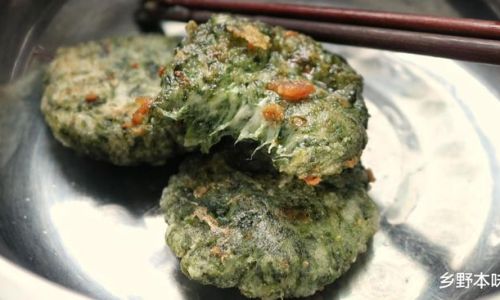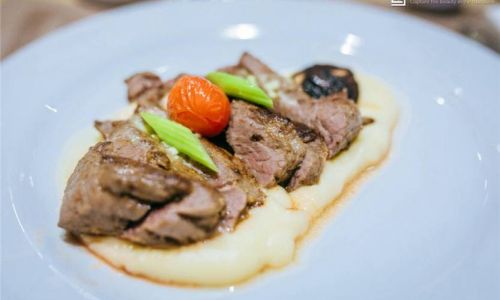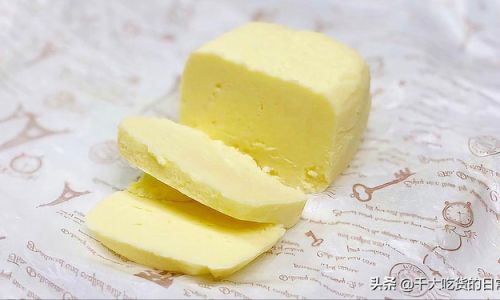Introduction

In the vast culinary landscape of China, traditional snacks often carry rich cultural and historical significance. Among these delightful treats, mugwort cake, known locally as Aogozi Baba, stands out for its unique flavor and health benefits. Mugwort (Artemisia argyi), a perennial herb, has been used in Chinese medicine for centuries due to its warming properties and ability to aid digestion. Combining mugwort with sticky rice flour and other ingredients, pan-fried mugwort cake not only satisfies the palate but also nourishes the body.
This article will guide you through the step-by-step process of making authentic pan-fried mugwort cake at home. Whether you’re a seasoned chef or a novice in the kitchen, following these detailed instructions will ensure you create a delicious and nutritious dish that brings a touch of traditional Chinese flavor to your table.
Section 1: Understanding Mugwort and Its Benefits
Before diving into the recipe, it’s essential to understand the star ingredient: mugwort. This aromatic herb grows wild in many parts of Asia and has been integrated into various culinary and medicinal practices. Mugwort is rich in vitamins, minerals, and antioxidants, making it a valuable addition to any diet.
Health Benefits:
- Digestive Aid: Mugwort is known to stimulate digestion and relieve gastrointestinal discomfort.
- Anti-Inflammatory: Its anti-inflammatory properties can help soothe minor aches and pains.
- Blood Circulation: Mugwort promotes blood circulation, which can be beneficial for those with cold extremities.
- Menstrual Regulation: Traditionally, mugwort has been used to regulate menstrual cycles and alleviate menstrual discomfort.
Culinary Uses:
In Chinese cuisine, mugwort is often used in seasonal dishes, particularly during festivals like the Dragon Boat Festival, where it’s incorporated into zongzi (rice dumplings). However, mugwort cake is perhaps one of the most accessible and enjoyable ways to enjoy this herb.
Section 2: Gathering Ingredients and Equipment
To make pan-fried mugwort cake, you’ll need a combination of fresh ingredients and basic kitchen equipment. Here’s a comprehensive list:
Ingredients:
- Fresh Mugwort Leaves: About 200 grams, cleaned and chopped.
- Sticky Rice Flour: 300 grams.
- Water: Approximately 150 milliliters (adjust as needed).
- Sugar: 50 grams (optional, for sweetness).
- Salt: A pinch, to taste.
- Sesame Seeds: 30 grams, toasted (for garnish).
- Vegetable Oil: For frying.
Equipment:
- Blender or Food Processor: To blend the mugwort leaves into a paste.
- Mixing Bowl: For combining ingredients.
- Spatula or Wooden Spoon: For mixing.
- Rolling Pin: For shaping the dough.
- Knife: For cutting the dough into pieces.
- Frying Pan: Non-stick is preferred.
- Paper Towels or Kitchen Towels: For draining excess oil.
Section 3: Preparing the Mugwort Paste
The first step in making mugwort cake is to prepare the mugwort paste. This involves blanching the mugwort leaves to remove bitterness and then blending them into a smooth paste.
Steps:
-
Blanching Mugwort Leaves: Bring a pot of water to a boil. Add a pinch of salt and a few drops of vegetable oil (this helps to retain the green color of the leaves). Submerge the cleaned mugwort leaves in the boiling water for about 30 seconds. Immediately remove them using a slotted spoon and plunge them into ice-cold water to stop the cooking process. Drain well.
-
Blending the Mugwort: Place the blanched and drained mugwort leaves in a blender or food processor. Blend until you achieve a smooth paste. You may need to add a little water to help with the blending process, but be cautious not to add too much.
Section 4: Making the Dough
Once you have your mugwort paste ready, it’s time to combine it with the sticky rice flour and other ingredients to form the dough.
Steps:

-
Mixing Ingredients: In a large mixing bowl, combine the sticky rice flour, sugar (if using), and a pinch of salt. Create a well in the center and pour in the mugwort paste. Gradually add water, a little at a time, while mixing with a spatula or wooden spoon until the mixture forms a dough that’s neither too sticky nor too dry.
-
Kneading the Dough: Transfer the dough onto a lightly floured surface. Knead for about 5-7 minutes until it becomes smooth and elastic. Cover the dough with a damp cloth to prevent it from drying out while you prepare for the next step.
Section 5: Shaping and Frying the Mugwort Cake
Now that you have your dough ready, it’s time to shape it into small cakes and fry them until golden brown and crispy.
Steps:
-
Shaping the Dough: Divide the dough into small portions, each about 30 grams. Roll each portion into a ball, then flatten it into a disc shape using your palms or a rolling pin. You can also use a mold if you prefer a uniform shape and size.
-
Coating with Sesame Seeds: Lightly press toasted sesame seeds onto one side of each dough disc. This will add a delightful crunch and nutty flavor to your mugwort cake.
-
Heating the Oil: Pour enough vegetable oil into a frying pan to cover the bottom by about half an inch. Heat the oil over medium-high heat until it reaches about 170°C (338°F). You can test the oil’s readiness by dropping a small piece of dough into it; it should sizzle immediately and rise to the surface.
-
Frying the Cakes: Carefully place a few dough discs, sesame seed-side down, into the hot oil. Fry for about 2-3 minutes on each side, or until they are golden brown and crispy. Use a slotted spoon to flip the cakes gently to avoid breaking them.
-
Draining and Cooling: Once fried, remove the mugwort cakes from the oil and place them on paper towels or kitchen towels to drain excess oil. Allow them to cool slightly before serving.
Section 6: Serving and Enjoying Your Mugwort Cake
Pan-fried mugwort cake is best enjoyed warm, but it can also be served at room temperature. Its unique flavor and texture make it a delightful snack or dessert.
Serving Suggestions:
- Pair with Tea: Serve your mugwort cake with a cup of hot tea, such as green tea or jasmine tea, to enhance its flavors.
- As a Dessert: For a sweet treat, drizzle a little honey or maple syrup over the cakes before serving.
- With Dipping Sauce: Create a simple dipping sauce with soy sauce, a touch of vinegar, and a dash of sesame oil to complement the savory aspects of the mugwort cake.
Storage:
Leftover mugwort cakes can be stored in an airtight container at room temperature for up to 2 days. For longer storage, wrap them individually in plastic wrap and place them in the freezer. Reheat in the oven or toaster oven until crispy before serving.
Conclusion
Making pan-fried mugwort cake is not only a culinary adventure but also a way to connect with traditional Chinese flavors and health benefits. By following the steps outlined in this article, you can create delicious and nutritious mugwort cakes that are perfect for sharing with family and friends. Whether you’re celebrating a festival, enjoying a quiet evening at home, or simply looking for a unique snack, mugwort cake is sure to delight your taste buds and nourish your body.
Remember, the beauty of homemade snacks lies in their simplicity and the love that goes into making them. Experiment with different ingredients and techniques to find your perfect mugwort cake recipe. Happy cooking!




0 comments